
A solution to the problem caused by the prominence of the White areas of the national markings was resolved by replacing the colour entirely with a light blue colour, which was arrived at by mixing one part of Roundel Blue with four parts White. This resulted in a pleasing hue, which was referred to as 'India White! The use of this new colour, along with the reduced size of the markings, appeared to satisfy the need to establish an aircraft's nationality without compromising its camouflage. At the end of September 1943 the use of the revised size and colour national markings was finally adopted. The need for aircraft to carry code letters also seems to have become unnecessary around mid-1943, but individual letters were retained. However, it took some time to apply the new markings to all the aircraft in India and Burma, and it was not at all unusual to see a combination of both old and new styles of markings in use alongside each other for some weeks to come.
It is interesting to note that the new low-viz markings are generally referred to as 'SEAC markings! There appears to be no official reason for this, the only plausible explanation being that their adoption took place shortly before the formation of South East Asia Command on 16 November 1943. This Command was established to be in charge of all Allied operations in the South-East Asian Theatre, with British Admiral Lord Louis Mountbatten as Supreme Allied Commander.
Hurricane Mk IIC, LD726, Y, of 113 San RAF, as flown by F/O Graham Skallam, Burma 1944
Basic kit: Arma Hobby Hurricane Mk IIC (ref. 70037)
Denne historien er fra February 2022-utgaven av Scale Aircraft Modelling.
Start din 7-dagers gratis prøveperiode på Magzter GOLD for å få tilgang til tusenvis av utvalgte premiumhistorier og 9000+ magasiner og aviser.
Allerede abonnent ? Logg på
Denne historien er fra February 2022-utgaven av Scale Aircraft Modelling.
Start din 7-dagers gratis prøveperiode på Magzter GOLD for å få tilgang til tusenvis av utvalgte premiumhistorier og 9000+ magasiner og aviser.
Allerede abonnent? Logg på
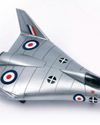
Mustard
BAC's Low Speed Research Vehicle

KOVOZAVODY PROSTEJOV (KP) 1 Was Monty's Triple'
Brian Derbyshire

SPECIAL HOBBY SAAB J-21A Review
From the late 1930s and early 1940s, with thewar in Europe raging around them andedging ever closer to its borders, the Flygvapnet had ordered Seversky P-35A aircraft, alongside Vultee Vanguards, but only sixty of the former and none of the latter were received.
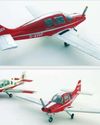
VFR MODELS Beagle B.121 Pup
This is the first 3D printed kit I have come across and it is really rather fine.

Hearts in the sky RIAT RETURNS
After a nearly three-year hiatus RIAT returned to our skies with a hot show in every sense of the word. SAM’s Mike Verier and Ray Ball were there.

Colour Conundrum
A Cancellation Conundrum - The RAF F-111s That Might Have Been Part 1

COPPER CAUDRON Caudron G.Ill in 1/32
Copper State Models have carved a name for themselves in the last few years producing high quality plastic kits of World War One subjects.
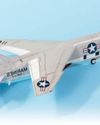
Academy RF-8A Crusader Conversion in 1/72
USMC squadron VMCJ-2 used six RF-8As during the Crisis (designation F8U-1P until September 1962), with others held in reserve, two flying out of Guantanamo Bay, and four out of NAS Key West.
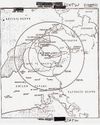
The Cuban Missile Crisis
Modelling US reconnaissance assets in 1/72 Part 2: The Nuclear Confrontation
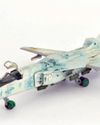
UKRAINIAT striker
The Sukhoi Su-24 is an all-weather attack aircraft capable of supersonic speeds and characterised by its side-by-side pilot/navigator seating and its variable geometry wing.